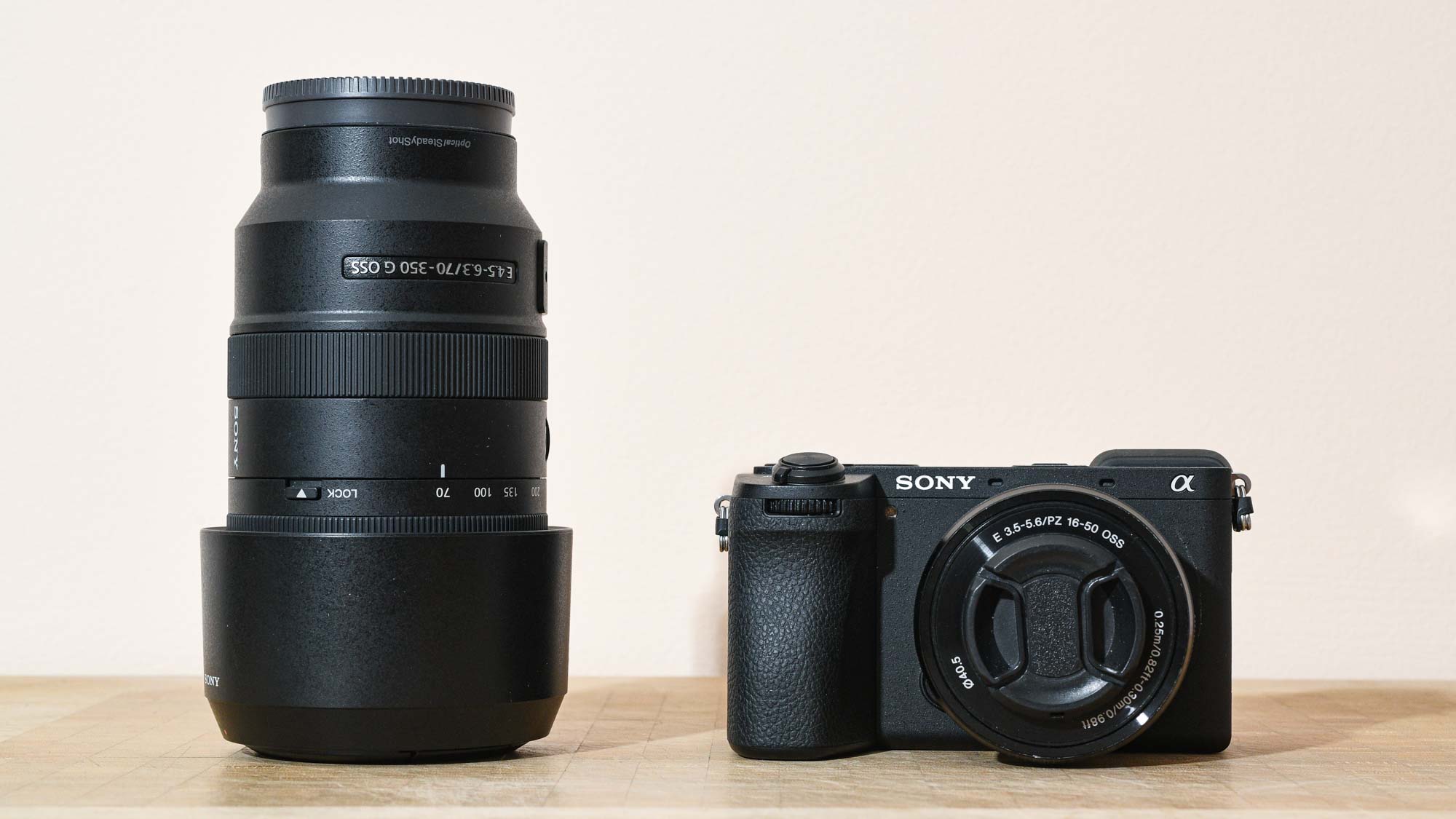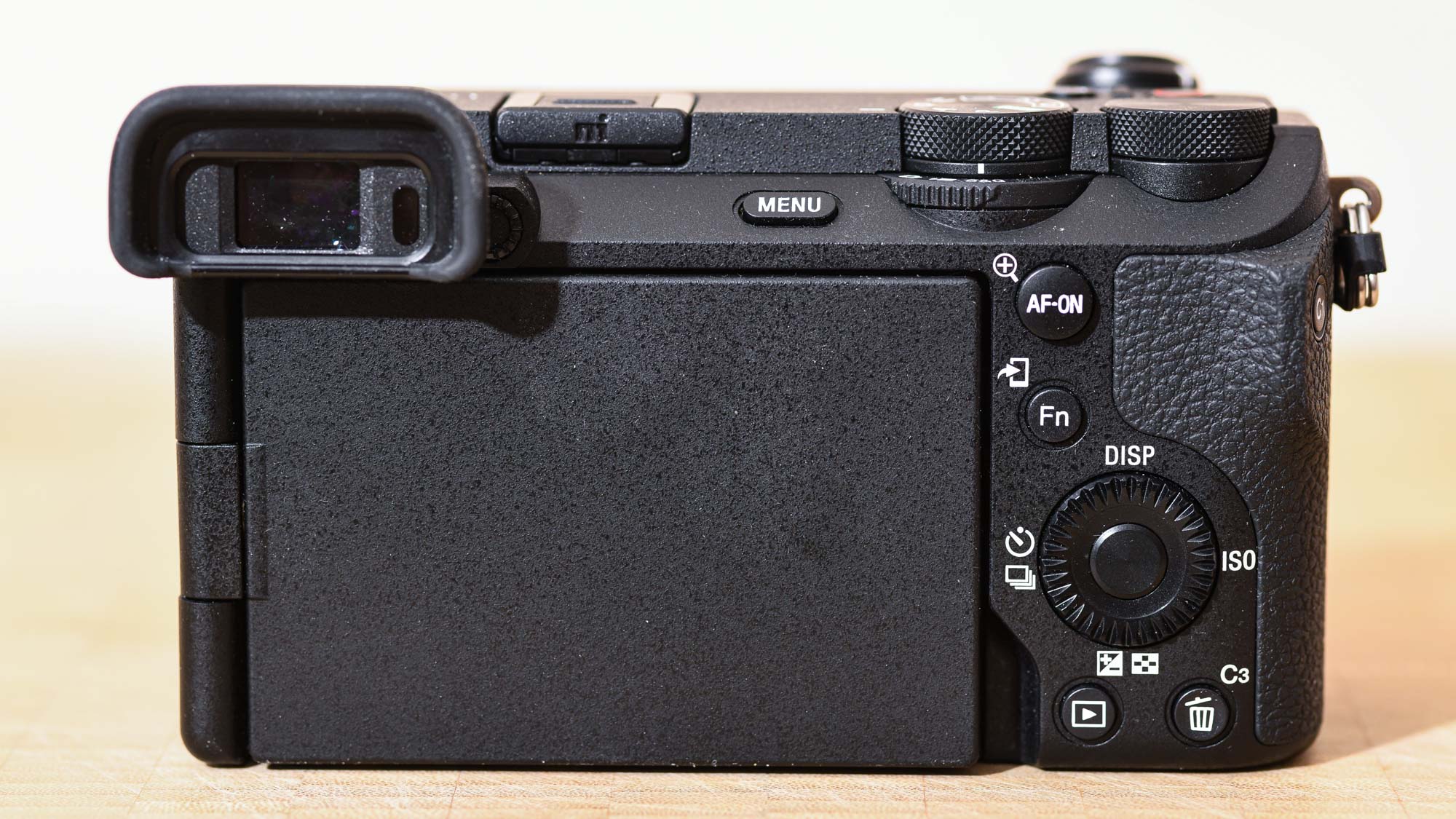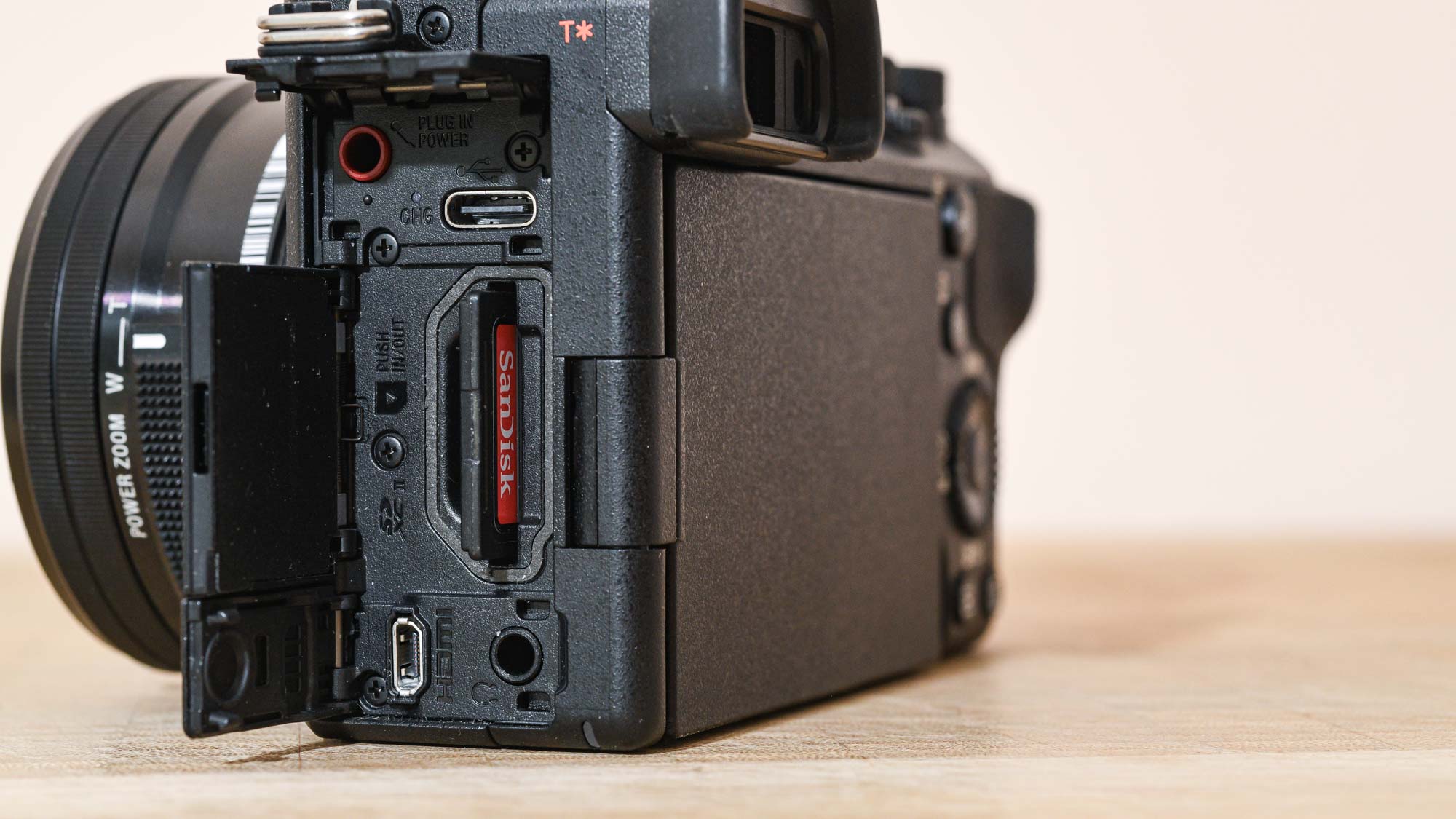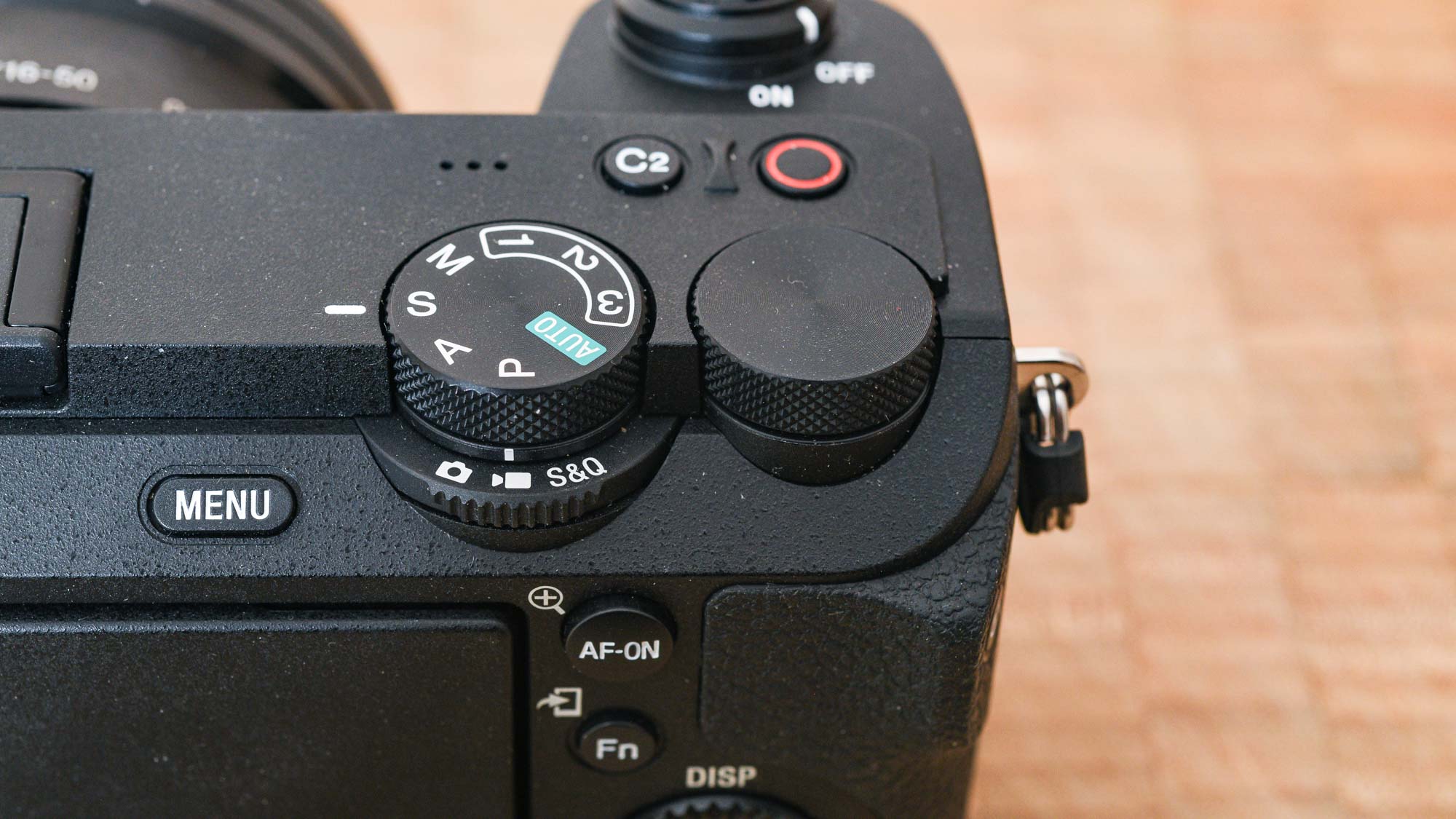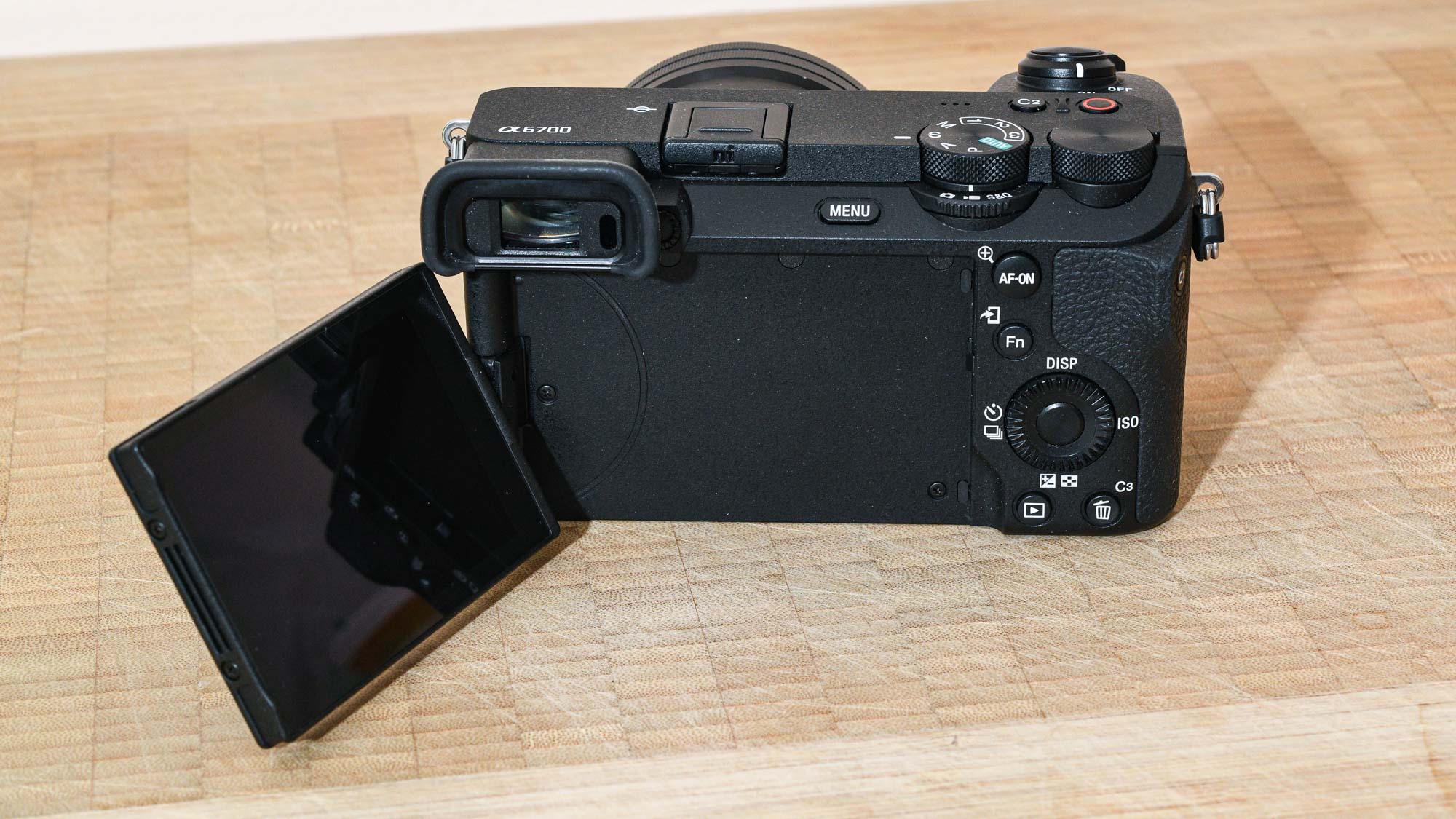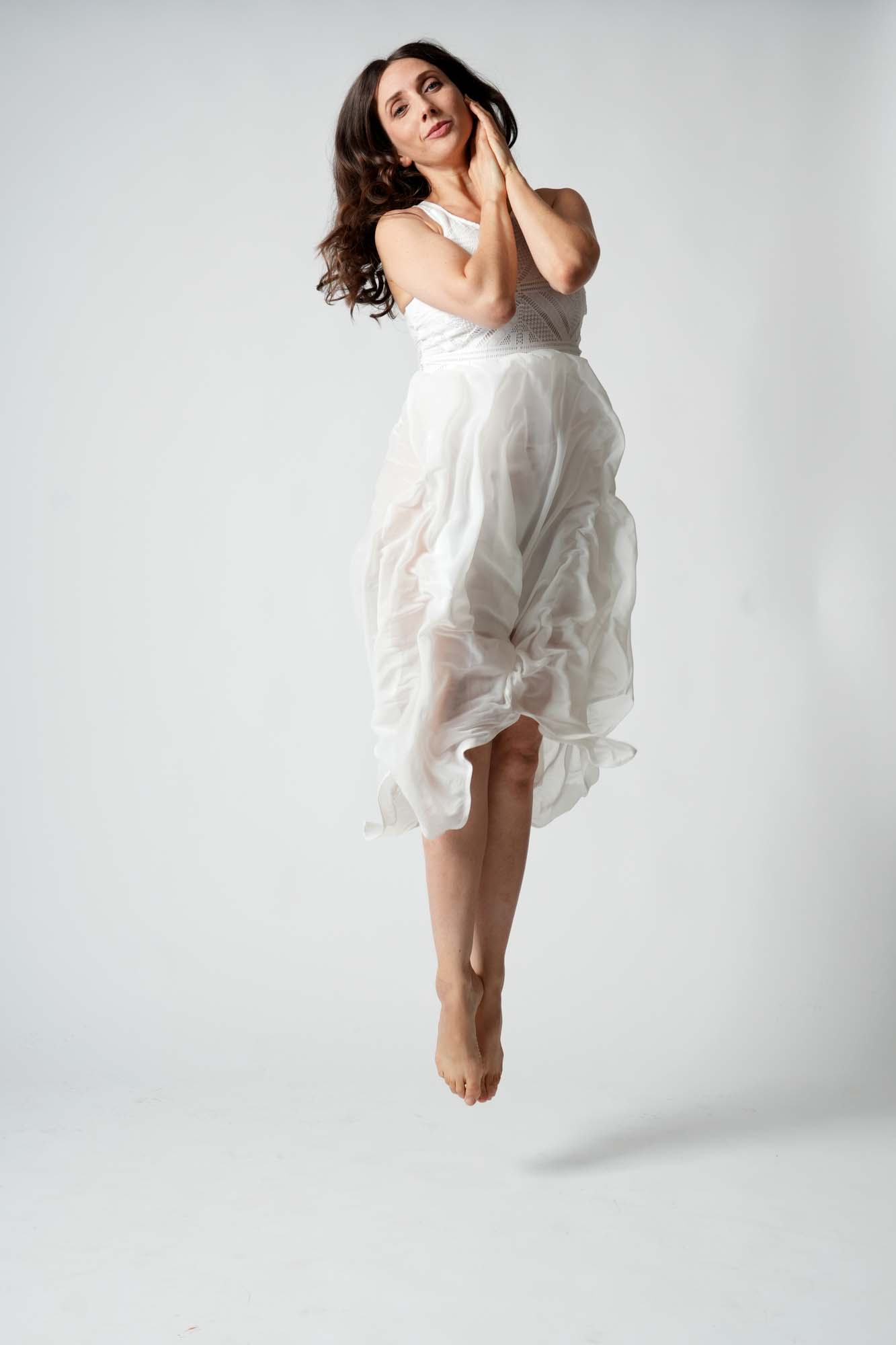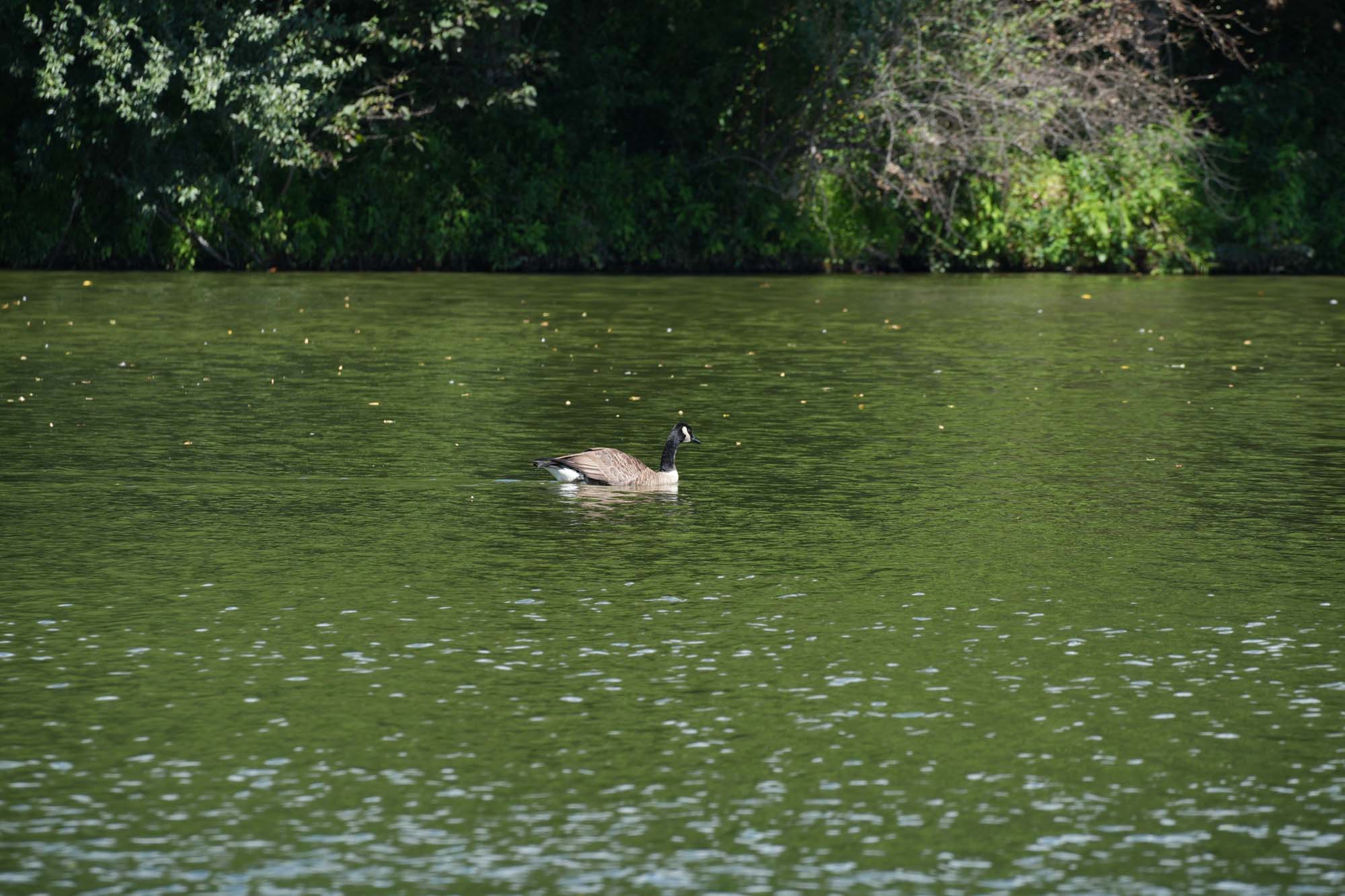Tom's Guide Verdict
With the Sony a6700, photographers and content creators have access to features and performance that provide access to the best of both worlds. Solid image quality and extensive stills and video features make this a serious hybrid creation tool.
Pros
- +
Excellent autofocus and tracking
- +
Compact and lightweight
- +
Solid image quality
- +
Updated video features
- +
Vlog-friendly
- +
Power Delivery charging
Cons
- -
No joystick for focus area selection
- -
Charger/cables not included
- -
Steep learning curve
- -
Modest EVF
Why you can trust Tom's Guide
Sensor: 26 megapixel BSI APS-C
Processor: BIONZ XR; Dedicated AI processor
Stabilisation: 5-axis IBIS
AF system: Hybrid AF
Viewfinder: 0.39 inch OLED EVF, 2.360 million dots
Display: 3-inch Vari-Angle touch screen LCD, 1.037 million dots
ISO range: ISO 100 – 32000 (expandable to 50-102400)
Max video resolution: 4K @120p
Ports: USB-C, Micro HDMI, 3.5mm external mic, 3.5mm headphone, Multi Interface Shoe, 1x SD/SDHC/SDXC UHS-I/II
Wireless/bluetooth: Wi-Fi & Bluetooth
Max shooting speed: 11fps mechanical; 11fps electronic
Max shutter speed: 1/4000 mechanical; 1/8000 electronic
Battery life (CIPA): 550 shots (Viewfinder); 570 shots (LCD monitor)
Size/weight: 4.7 x 2.7 x 3.0 inches; 17.39 ounces (with battery and memory card)
The Sony a6700 is the first update to the popular a6000 line since its predecessor, the a6600, was introduced four years ago. It was well worth the wait, though. The a6700 benefits from a number of Sony’s latest technological developments such as a dedicated AI processor and advanced subject recognition. With trickle-down features from Sony cameras like the full-frame a7R V, the FX30 cinema camera and the vlog-friendly Zv-E1, the a6700 has brought new life (and features) to this 26-megapixel APS-C model.
The camera is designed for enthusiasts who want a compact camera that doesn’t scrimp on features. While this is a hybrid camera, balancing stills and video capabilities, the Sony a6700 will primarily appeal to video content creators who want to have access to both. But even those who are mainly interested in photography will likely be tempted by the camera’s powerful video tools — especially those who are ready to step up their video game (but may not know it, yet).
The Sony a6700 has many strengths including autofocus performance and image quality but, like all cameras, it has some shortcomings as well. Continue reading our full review of the Sony a6700 to see if it’s a good fit for your photo and video needs.
Sony a6700 review: Price & availability
The Sony a6700 began shipping August 2023 for $1,400/£1,449 (body only). Sony also offers two power zoom, Optical SteadyShot APS-C E-mount kit options: the PZ 16-50mm F3.5-5.6 OSS ($1,500/£1,549) or the PZ 18-135mm F3.5-5.6 OSS lens ($1,800/£1,799).
The 16-50mm kit lens is compact, lightweight with a focal range that’s appropriate for everyday use — not to mention travel and street shooting. Optical quality is good but not great and build quality is not as sturdy as other Sony lenses. For better build quality and more serious photographic endeavors, consider the 18-135mm kit lens; it covers a broader focal range and, as part of the kit, costs about $250/£199 less than the lens’ retail price of $658/£499, so it’s good value.
Given that Sony offers a large selection of E-mount lenses — the a6700 can accommodate both APS-C and FE (full-frame) models — and third-party manufacturers also offer E-mount lenses, investing in this platform gives you more lens choices than with any other mirrorless manufacturer.
Sony a6700 review: Design
The Sony a6700 measures in at 4.87 x 2.75 x 3.0 inches and weighs 17.39 ounces (with battery and memory card), making it compact and lightweight. Built around a magnesium alloy chassis, the camera is well-constructed and feels sturdy in the hand. Its dust and moisture resistant sealing comes with the usual caveat of the camera not being 100% impervious to the elements, so it’s best to use common sense under extreme conditions, but it’ll certainly stand up to a bit of rain.
Get instant access to breaking news, the hottest reviews, great deals and helpful tips.
Despite my less-than-enthusiastic assessment of the 16-50mm kit lens, pairing the two created the perfect companion for hours of walking around at outdoor events on hot summer days. For a longer zoom, the relatively compact 70-350mm F/3.5-6.3/7.0 G OSS lens ($1,000/£829) was a good match for the a6700. Longer and heavier lenses than that might throw the a6700’s small size off-balance.
The grip is surprisingly deep given the a6700’s compact size and provides a solid and comfortable handhold. Even larger hands won’t feel cramped when shooting with the a6700.
The vari-angle, 3-inch touchscreen LCD, which can be folded into the back of the camera to prevent scratches and smudges, is perfect for high and low angle shots as well as for selfies and vlog creation. It features a relatively modest 1.04M dot resolution, while extreme overhead sunlight makes it difficult to read the monitor even at full brightness. However, the rangefinder-style EVF is a good alternative when composing and adjusting settings — although small and also of modest resolution (as EVFs go) at 2.36M dots, it’s clear enough to read and select from the camera’s menus. The Fujifilm X-T5, a rival APS-C camera, packs a 3.69M dot viewfinder, for context.
There’s no built-in flash but the camera is well-equipped for external lighting devices and audio accessories such as the new Sony ECM-M1 shotgun microphone ($350/£349) thanks to its Multi Interface Shoe. Add the a6700’s 3.5mm headphone and microphone jacks and you’re pretty much good to go for video shoots. Micro HDMI and USB-C ports, along with Bluetooth and WiFi, round out its connectivity.
Unfortunately, the Sony a6700 has only a single SD card slot. It’s tucked on the side with a locking cover, so you can easily switch out cards when the camera is on a tripod. The single card slot seems like a compromise to keep the camera body compact but, still, not having a second slot for automatically backing up video and stills is disappointing, and will be a serious mark against the camera for professional usage. For dual slots, you’ll have to opt for the full frame Sony A7 IV, which also features a CFExpress Type A port for higher speed, higher capacity cards. Fortunately, the a6700’s single slot supports UHS-II, providing enough speed for 4K recording.
Sony a6700 review: Controls
The Sony a6700 offers a plentiful selection of external controls, with buttons and dials placed across the top and back of the camera body. Operation is generally intuitive and controls are conveniently located. Better yet, the a6700 offers extensive customization: almost all external controls can be customized, there are three dedicated Custom buttons, and a trio of user-designed My Menu setting configurations can be accessed directly from the Mode dial.
While the initial customization of the camera may take some time and forethought, the convenience it affords is well worth the effort for photographers and videographers who want/need quick access to specific functions. Even if you don’t have specific settings that you use most often,the myriad remappable buttons give plenty of ways to adjust settings on the fly.
One of the controls that is sorely missed is a joystick for selecting and moving the focus point. Instead, one has to press the center set button and then press the sides of the control wheel to move the focus point. Sure, there are effective touchscreen/touch panel options on the a6700 but, for me, a joystick is the most efficient and convenient method of moving the focus area.
If you want or need to control the camera remotely, download Sony’s Creators’ App, available for iOS at the App Store and Android version at Google Play.
It wouldn’t be a full review without mentioning the Menu system. Yes, Sony continues to make their menus more logical and easier to navigate. And, unlike earlier models, the a6700 provides hints as to why it can’t perform a certain function — usually something to do with a conflicting setting. But the a6700 has so many options and these menus are so densely populated that it can be confusing.
Sony a6700 review: Autofocus performance
The Sony a6700 features standout autofocus capabilities. From tracking to subject identification, the camera is generally spot on. There are so many options within its AF system that it may take a little time to figure out the best settings for different scenarios. But once you set up the AF modes that work for you, there will be many more hits than misses especially when shooting action. Additionally, the dedicated AI processor (inherited from the a7RV) has been “trained” to recognize the human form and poses — not just eyes and faces — to assist in AF and tracking of people in a variety of situations.
Beyond the Human subject detection, the Sony a6700 has several additional categories including Animals and Birds with fine-tuning options where users can prioritize detecting Eye/Head/Body, Eye/Head, or just Eye. In testing, we found this especially useful when shooting wildlife, as we could tell the camera to prioritize different parts of animals when they were partially hidden.
You’ll also find Insect (perfect for macro), Car/Train, and Airplane subjects on the a6700. With compatible lenses, users can specify tracking sensitivity, subject shift sensitivity and transition speed, all of which come in handy when there are multiple subjects in a scene. Cameras like the Canon EOS R7 offer a simpler, but similar, tracking sensitivity function.
These detection modes put the a6700’s autofocus system up there with the best on the market at the moment. Eye/Face detection is, of course, almost ubiquitous among digital cameras these days. However, extra detection modes for animal, bird, and vehicles are what sets the top AF systems apart. On paper, you’ll still have more AF capabilities with Canon’s AF system found in the Canon EOS R6 Mark II, which also features race car and motorcycle detection, and from the Fujifilm X-T5 and X-S20, which can also track motorcycles and bicycles. However, given the similarities across cameras in terms of subject recognition categories, it isn’t simply about on-paper stats. Finding a camera that delivers speed and accuracy when identifying subjects is also important. Overall, the Sony a6700 has one of the strongest subject recognition performance for its class thanks, in large part, to its dedicated AI processor, making it a very strong contender among its competition.
The little bird in the image above was hopping around by the side of a lake, so I tracked its erratic movements with subject recognition set to “bird”. The camera’s AF tracking managed to keep up with the bird’s speedy and erratic movements, resulting in sharp focus on its eye and beak.
Sony a6700 review: Image performance
The Sony a6700 renders rich but realistic colors even when shot on the Standard Creative Look, as seen in the brightly colored image below. At the time of this review, none of the major imaging software applications had yet added support for a6700 RAW files. However, Sony’s free Imaging Edge software, downloadable from the Sony support site, can process the files. This won’t be a long term issue, either.
With few exceptions, the camera delivered a broad dynamic range as seen in this image shot at around noon on a sunny day thanks, in part, to the a6700’s D-Range Optimizer. Set on Auto for this shot, settings to apply a stronger dynamic range effect are available.
The Sony a6700’s dynamic range was equally as impressive in the shot below, delineating paler shades of white and grey, such as the white dress.
With 5-axis IBIS and the image-stabilized Sony E-mount 70-350mm lens, it was easy to handhold the camera at 350mm on a windy day to capture this detailed shot of a water fowl paddling along the lake.
At 11fps max using either the mechanical or the electronic shutter, the camera’s not the fastest in its class. But the capture speed is sufficient for most scenarios (although I would keep expectations in check when shooting super-fast events like car races). It was plenty to capture the movements of the carnival ride in the image below, stopping the action in mid spin. The camera also did a great job keeping rolling shutter contained when shooting with the mechanical shutter. Avoid the electronic shutter when shooting action–rolling shutter may ruin your shots..


Image noise was kept well under control up to about ISO 3200. Head to ISO 6400 and you’ll likely be satisfied with the results — as you can see in the image above shot at ISO 6400, noise is present under close observation, but certainly not ruinous to image definition. Above that, image noise becomes more noticeable. But with the wide range of light sensitivity from 100-32000 (expandable to 50-102400), the camera is well equipped to capture images under a variety of conditions.
Sony a6700 review: Video performance
The Sony a6700’s video capabilities have been boosted in a big way over previous models. It inherits the sensor from the Sony FX30 cinema camera and features like the Auto Framing from the vlog-friendly Zv-E1, to name just a couple. There’s only an imperceptible crop at 4K/60, which gives the a6700 a leg up over the Canon EOS R7 with its 1.8x crop. The a6700 can also capture 4K up to 120p (albeit with a 1.5x crop). Keep in mind, though, that some demanding modes require a V90 SD card. Multiple codec options are available including XAVC HS, XAVC-I and XAVC-S; your choice of codec will also help determine whether you need that V90 card. If you’re looking for even higher resolution video, check out the Fujifilm X-S20’s 6.2K/30p internal recording capabilities.
More experienced videographers (and aspirational newcomers) will appreciate the option to upload and apply Look Up Tables (LUTs) to apply a particular look for the video. Sony has also added S-Log 3, which promises up to 14 stops of dynamic range. Both the LUTs and S-Log 3 will help make grading easier when post-processing. Another appealing option for styling your video, which is unique to Sony cameras, is S-Cinetone, a preset to give a cinematic look straight out of camera.
Color rendering, exposure, AF and tracking generally deliver the same solid results as still images. Overall exposure in manual and semi-automatic modes was accurate. Program autoexposure, however, tended towards underexposure in the few scenes I tested in Program (P) mode.
In video mode, the a6700 features an image stabilization Active Mode that enhances the camera’s SteadyShot system. As someone who sometimes has to depend on a handheld gimbal when shooting video to get smooth footage, I had hoped the Active Mode would work well enough to leave the gimbal at home. While I won’t toss my gimbal, the Active Mode worked well when using both hands to hold the camera while I was stationary but, unsurprisingly, it couldn’t compensate for camera shake while walking or using the 16-50mm lens’ power zoom feature. The built-in microphone did a relatively good job at capturing clean audio.
One of the coolest video features on the Sony a6700 is Auto Framing, which will be especially useful for vloggers and solo video shooters. Essentially, the camera automatically crops the frame to follow the subject’s movements. This gives the effect of having an active videographer behind the camera panning and zooming, but it’s totally automatic.
If there are multiple subjects, you can tap the person or object (say the person who is speaking or being interviewed or a product that you’re demonstrating for a vlog) to direct the camera to follow them. It’s a great way to add extra cinematography elements into footage that would otherwise be difficult for solo shooters. The example videos below demonstrate the results.
Unlike rivals such as the Fuji X-S20 and Canon EOS R50, the a6700 doesn’t feature a Product Showcase mode, which automatically transitions focus from your face to a product you’re presenting in front of the camera. This will only be of use to specific vloggers, but it's disappointing not to see it given Sony have packed a similar feature into the ZV-E1.
There is no recording time limit on the a6700, which is great news. However, there’s no cooling system as there is on the Sony FX30, so keep that in mind when shooting for long stretches or under certain conditions. I shot a series of short 4K/60p clips sequentially when the camera shut down after about 30 minutes. That shouldn’t have been a problem but it was 90+ degrees and sunny and I had been walking around shooting stills in the heat for a while before switching to video. The key factor here was the ambient temperature. Fortunately, after a couple of minutes I was able to shoot additional clips.
If you plan to shoot video — especially in higher ambient temperatures or even just in the sun, be sure to go into the menu and set Auto Temp to high. You should then be able to shoot continuously for much longer. If, however, you plan on regularly shooting lengthy 4K video and want to try to avoid overheating issues, the Fujifilm X-S20 may be a better bet since an optional cooling fan is available.
Sony a6700 review: Battery life
The Sony a6700’s battery life is good albeit not exceptional. Depending on whether you use the EVF or monitor (or both), how often you playback images, etc., a single charge can deliver between 550 (EVF) to 570 (LCD) shots. Don’t be surprised if your shots-per-charge go a little higher.
Since Sony doesn’t provide a wall charger — or even a USB-C cable — you’re on your own to decide how to power up the NP-FZ100 battery (the same battery used in a number of different Sony mirrorless models so you may already have a compatible wall charger if you’re a Sony shooter). Your options include USB-C charging (including via a Power Delivery system/power bank) or to pick up a wall charger such as the Sony BC-QZ1 for about $98. Numerous third party batteries and charging adapters are readily available online, though, for much cheaper than the official Sony kit.
Sony a6700 review: Verdict
The Sony a6700 review is an extremely worthy successor to the four-year-old a6600. Technology changes quickly and the a6700 certainly benefits from four years of advancements. With the a6700, Sony have built further upon what was an already-impressive autofocusing system. Add all the new video capabilities and the a6700 certainly qualifies as a hybrid camera that will serve both still and motion creators. Photo and video enthusiasts will certainly find plenty of features to suit their needs and hone their skills with this compact but capable camera.
For Sony a6600 users, updating to the a6700 is pretty much a no-brainer, especially for video. For those coming from other brands, or venturing into mirrorless for the first time, there are a wealth of choices, especially if they’re brand agnostic. The Canon EOS R7, Fujifilm X-T5 and the Fujifilm X-S20, all offer incredible performance for similar money and give the a6700 some stiff competition.
Overall, you’re unlikely to be disappointed with any of the cameras mentioned here, so it’ll basically come down to the secondary features that are important to you above and beyond the ability to shoot both stills and video — things like vlogging modes, overheating or dual card slots to name just a few. Although the Sony a6700 isn’t perfect (what camera is?), its overall performance, AF, video features and image quality — arguably the most important factors when considering a camera — still make it an incredibly tight package. If you’re an enthusiast looking for a powerful video camera, the Sony a6700 is extremely easy to recommend.
Theano Nikitas is a freelance journalist and photographer. She's been writing about photography for more than 20 years, contributing countless reviews of cameras, lenses, accessories and software packages to Tom's Guide. Her work has also appeared in dozens of other magazines and websites, including CNET, DPreview, PopPhoto, Professional Photographer and Shutterbug.

